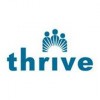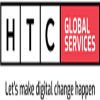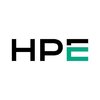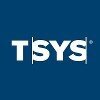Technical Project Manager
50+ Technical Project Manager Interview Questions and Answers

Asked in Creative Information Technology

Q. 1) What are Isolation levels in SQL? 2) What happens if same SP is modified by multiple users at same time, how do u capture the details of each user's changes? 3) What are ACID properties? 4) What are triggers...
read moreTechnical interview questions for a Project Manager role
Isolation levels in SQL determine the degree to which one transaction must be isolated from resource or data modifications made by other transactions
If the same stored procedure is modified by multiple users at the same time, the changes made by each user can be captured using version control tools such as Git or SVN
ACID properties are a set of properties that ensure database transactions are processed reliably
Triggers a...read more

Asked in SMEC

Q. Full form of FHTC, specifications od hdpe and di pipes, wall thickness of water retaining structure.
The full form of FHTC is not clear. HDPE pipes have high strength and flexibility, while DI pipes are more durable. Wall thickness of water retaining structure depends on the design and load requirements.
FHTC full form is not clear
HDPE pipes have high strength and flexibility, making them suitable for underground installations and areas with high seismic activity
DI pipes are more durable and have a longer lifespan, making them suitable for above-ground installations and areas...read more
Technical Project Manager Interview Questions and Answers for Freshers

Asked in CommVault

Q. How do you manage to keep track of projects while collaborating with multiple teams, such as Product, Engineering, Quality Assurance, and Customer Support?
I utilize structured communication, project management tools, and regular updates to coordinate across teams effectively.
Implement project management tools like Jira or Trello to track tasks and progress across teams.
Schedule regular cross-team meetings to ensure alignment on goals and timelines, such as bi-weekly sprint reviews.
Use shared documentation platforms like Confluence for transparency and to keep everyone updated on project changes.
Establish clear roles and respons...read more

Asked in Kaiser Permanente

Q. What is Resource Management? Does it involve only Human resource management ?
Resource management involves planning, allocating, and optimizing resources to achieve project goals. It includes human, financial, equipment, and material resources.
Resource management is the process of planning, allocating, and optimizing resources to achieve project goals.
It involves managing various types of resources such as human resources, financial resources, equipment, and materials.
Effective resource management ensures that resources are utilized efficiently and eff...read more

Asked in HTC Global Services

Q. Who is responsible for maintaining the growth of business income?
The responsibility for maintaining business income growth typically falls on multiple roles, including leadership and project managers.
Leadership teams set strategic goals and allocate resources to drive growth.
Sales and marketing departments are crucial for generating revenue through customer acquisition.
Project managers ensure that projects align with business objectives and deliver value, impacting income positively.
Product development teams innovate and improve offerings,...read more
Asked in Noventiq

Q. What tool you use from Project Management? What is Epic and User story?
I use tools like Jira and Trello for project management. An Epic is a large body of work that can be broken down into smaller tasks called User Stories.
Tools like Jira, Trello, Asana are commonly used for project management.
An Epic is a large chunk of work that can be divided into smaller, more manageable pieces.
User Stories are individual tasks or requirements that collectively make up an Epic.
Epic and User Stories are used in Agile project management to break down work and ...read more
Technical Project Manager Jobs




Asked in BCD Travel

Q. Tell me about a time when your project was in trouble and what you did to resolve it.
Led a project from Red to Green by addressing scope creep, enhancing communication, and implementing risk management strategies.
Identified scope creep due to additional client requests; held a meeting to clarify project boundaries.
Enhanced team communication by implementing daily stand-ups, which improved transparency and accountability.
Conducted a risk assessment to identify potential issues early, allowing for proactive mitigation strategies.
Reallocated resources to critica...read more

Asked in LRN Corporation

Q. How do you deal with inter-team conflicts?
Address conflicts openly, listen to all parties, find common ground, and facilitate resolution.
Encourage open communication between team members
Listen to all parties involved to understand their perspectives
Identify common goals and interests to find a compromise
Facilitate a discussion or mediation to resolve conflicts
Establish clear guidelines and processes for conflict resolution
Share interview questions and help millions of jobseekers 🌟


Asked in SMEC

Q. What is the minimum required SBC for raft foundation design of OSHR?
The minimum required Sbc for raft foundation design of OHSR depends on various factors.
The size and weight of the OHSR
The soil type and bearing capacity
The depth of the foundation
The seismic zone of the location
Consulting a geotechnical engineer is recommended

Asked in Cisco

Q. How will you ensure that Jira issues are not moved ahead improperly?
Regularly review and prioritize Jira issues, set clear deadlines, communicate with team members, and track progress.
Regularly review and prioritize Jira issues to ensure they are not moved ahead without proper consideration.
Set clear deadlines for each Jira issue to prevent unnecessary delays.
Communicate effectively with team members to ensure everyone is on the same page regarding the status of Jira issues.
Track progress regularly to identify any issues or bottlenecks that m...read more


Q. Explain the technical structure of the product implementation.
Product implementation involves structured phases, collaboration, and technology integration for successful delivery.
1. Requirement Gathering: Collaborate with stakeholders to define product features and functionalities.
2. Design Phase: Create architectural designs and wireframes to visualize the product.
3. Development: Utilize agile methodologies for iterative development, ensuring flexibility and responsiveness.
4. Testing: Implement automated and manual testing to ensure pr...read more

Asked in RNF Technologies

Q. What tools do you use for maintaining and tracking projects?
I utilize various tools for project management and tracking to ensure efficiency and transparency throughout the project lifecycle.
Jira: For agile project management, tracking issues, and sprint planning.
Trello: For visual task management using boards and cards, suitable for smaller teams.
Asana: For task assignments, deadlines, and project timelines, enhancing team collaboration.
Microsoft Project: For detailed project scheduling and resource management.
Slack: For team communi...read more
Asked in 1Silverbullet Platforms

Q. Tell me about your past experience leading a start-up.
Led a tech start-up focused on innovative software solutions, driving growth and team collaboration.
Developed a project roadmap that aligned with business goals, resulting in a 30% increase in product delivery speed.
Implemented Agile methodologies, which improved team communication and reduced project turnaround time by 25%.
Managed a cross-functional team of developers, designers, and marketers, fostering a collaborative environment that enhanced creativity.
Secured funding th...read more
Asked in 1Silverbullet Platforms

Q. What were the challenges in On-Premise Enterprise Integration solutions consulting?
On-premise enterprise integration solutions face challenges like complexity, scalability, and data security.
Complexity of legacy systems integration: Integrating with older systems often requires custom solutions, increasing project timelines.
Scalability issues: As businesses grow, on-premise solutions may struggle to scale effectively without significant investment.
Data security concerns: Ensuring compliance with regulations like HIPAA or GDPR can complicate integration effo...read more

Asked in SMEC

Q. Code of practice used for water retaining structures.
The code of practice used for water retaining structures is BS EN 1992-3:2006.
BS EN 1992-3:2006 is the European standard for the design of concrete structures.
It provides guidelines for the design, construction, and maintenance of water retaining structures.
The code covers various types of water retaining structures such as reservoirs, tanks, and swimming pools.
It includes requirements for materials, structural design, durability, and safety.
The code also provides guidance on...read more

Asked in Antier Solutions

Q. What is the Angular command to run the server?
The command to run the server in Angular is 'ng serve'
Use the command 'ng serve' in the terminal to start the server
Make sure you are in the root directory of your Angular project before running the command
You can add additional flags like '--open' to automatically open the browser after starting the server

Asked in Tech Mahindra

Q. How do you deal with risks and prioritize them?
Identify, assess, prioritize, and mitigate risks based on impact and likelihood.
Identify potential risks by analyzing project scope, requirements, stakeholders, and external factors.
Assess risks by determining their impact on project objectives and likelihood of occurrence.
Prioritize risks based on their potential impact on project success and likelihood of occurrence.
Mitigate risks by developing risk response strategies such as avoidance, mitigation, transfer, or acceptance....read more

Asked in HTC Global Services

Q. What is the growth of business income?
Growth of business income refers to the increase in revenue over time, indicating financial health and expansion potential.
Increased sales: A company may launch new products, leading to higher sales figures.
Market expansion: Entering new markets can significantly boost income, e.g., a local restaurant opening a second location.
Improved pricing strategies: Adjusting prices based on demand can enhance revenue, like premium pricing for luxury goods.
Cost reduction: Streamlining o...read more

Asked in Antier Solutions

Q. What is the use of indexing in MySQL?
Indexing in MySQL improves the speed of data retrieval by creating a sorted reference to the data.
Indexes in MySQL are used to quickly locate rows in a table without having to search the entire table.
They are created on columns in a table to speed up the query process.
Indexes can be created using a single column or multiple columns for better performance.
Examples of indexes in MySQL include primary keys, unique keys, and full-text indexes.

Asked in Antier Solutions

Q. How do you handle state in React JS?
State in React JS is managed using component state or Redux for global state management.
Use component state to manage local state within a component
Use Redux for global state management across multiple components
Update state using setState() method in class components or useState() hook in functional components

Asked in Hewlett Packard Enterprise

Q. What types of support contracts does HPE sell?
HPE offers various support contracts tailored to customer needs, including hardware and software support options.
HPE Foundation Care: Provides hardware support with options for next business day service.
HPE Proactive Care: Offers advanced support with proactive monitoring and issue resolution.
HPE Datacenter Care: Customized support for large environments, including dedicated account management.
HPE Software Support: Covers software products with updates, patches, and technical...read more

Asked in TSYS|Total System Services

Q. What CI/CD tools have you used?
I have experience with Jenkins, GitLab CI/CD, and CircleCI.
Jenkins - widely used open-source CI/CD tool with a large plugin ecosystem
GitLab CI/CD - integrated with GitLab for seamless code management and deployment
CircleCI - cloud-based CI/CD platform with easy setup and integration

Asked in Reward360

Q. What are the differences between waterfall and agile delivery methodologies?
Waterfall is a linear sequential approach to project management, while Agile is an iterative and flexible approach.
Waterfall follows a sequential process where each phase must be completed before moving on to the next, while Agile allows for flexibility and iterative development.
Waterfall is more rigid and requires detailed planning upfront, while Agile focuses on adaptability and responding to change.
Waterfall is best suited for projects with well-defined requirements and li...read more
Asked in Noventiq

Q. What action points would you take in a situation where a user story is missed?
Hold a retrospective to identify root cause and implement process improvements.
Conduct a retrospective with the team to discuss why the user story was missed.
Identify the root cause of the issue, whether it was due to unclear requirements, lack of communication, or other factors.
Implement process improvements based on the findings of the retrospective to prevent similar issues in the future.

Asked in Extentia Information Technology

Q. How do you manage a difficult client?
Managing difficult clients requires effective communication, setting boundaries, and finding common ground.
Listen actively to understand their concerns and frustrations.
Communicate clearly and set realistic expectations.
Establish boundaries and enforce them when necessary.
Find common ground and focus on solutions rather than problems.
Seek feedback and address any issues promptly.
Consider involving a mediator or third party if necessary.

Asked in Xceedance

Q. How do you handle changes in a project?
Effectively managing project changes involves communication, documentation, and stakeholder engagement to ensure project success.
Establish a change management process: Define how changes will be requested, assessed, and approved. For example, use a change request form.
Communicate with stakeholders: Keep all relevant parties informed about potential changes and their impacts. Regular updates can prevent misunderstandings.
Assess the impact of changes: Analyze how changes will a...read more

Asked in Tech Mahindra

Q. What is the difference between MPC and DPC in ODATA?
MPC stands for Model Provider Class and is used to define the data model in OData. DPC stands for Data Provider Class and is used to define the data access logic in OData.
MPC is responsible for defining the data model and metadata for the OData service.
DPC is responsible for defining the data access logic, such as reading and writing data, in the OData service.
MPC is used to define the entity types, associations, and navigation properties in the OData service.
DPC is used to i...read more

Asked in SMEC

Q. Design specification of oshr
OSHR design specification includes hardware and software requirements for the system.
Hardware requirements such as processor, memory, storage, and input/output devices.
Software requirements such as operating system, programming languages, and development tools.
Functional requirements such as user interface, data storage, and security features.
Non-functional requirements such as performance, reliability, and scalability.
Example: OSHR design specification may require a minimum ...read more

Asked in Antier Solutions

Q. Can you provide an example of a JOIN query in MySQL?
Join query in MySQL is used to combine rows from two or more tables based on a related column between them.
Use JOIN keyword to combine tables
Specify the columns to join on using ON keyword
Different types of joins include INNER JOIN, LEFT JOIN, RIGHT JOIN, and FULL JOIN
Asked in Sysma Tech

Q. Do you have a laptop or desktop?
Yes, I have a laptop and desktop for work purposes.
I have a laptop for when I'm on the go and need to work remotely.
I also have a desktop at home for when I need a larger screen and more power for certain tasks.
Having both devices allows me to be flexible and efficient in my work.
Interview Questions of Similar Designations
Interview Experiences of Popular Companies






Calculate your in-hand salary
Confused about how your in-hand salary is calculated? Enter your annual salary (CTC) and get your in-hand salary


Reviews
Interviews
Salaries
Users










